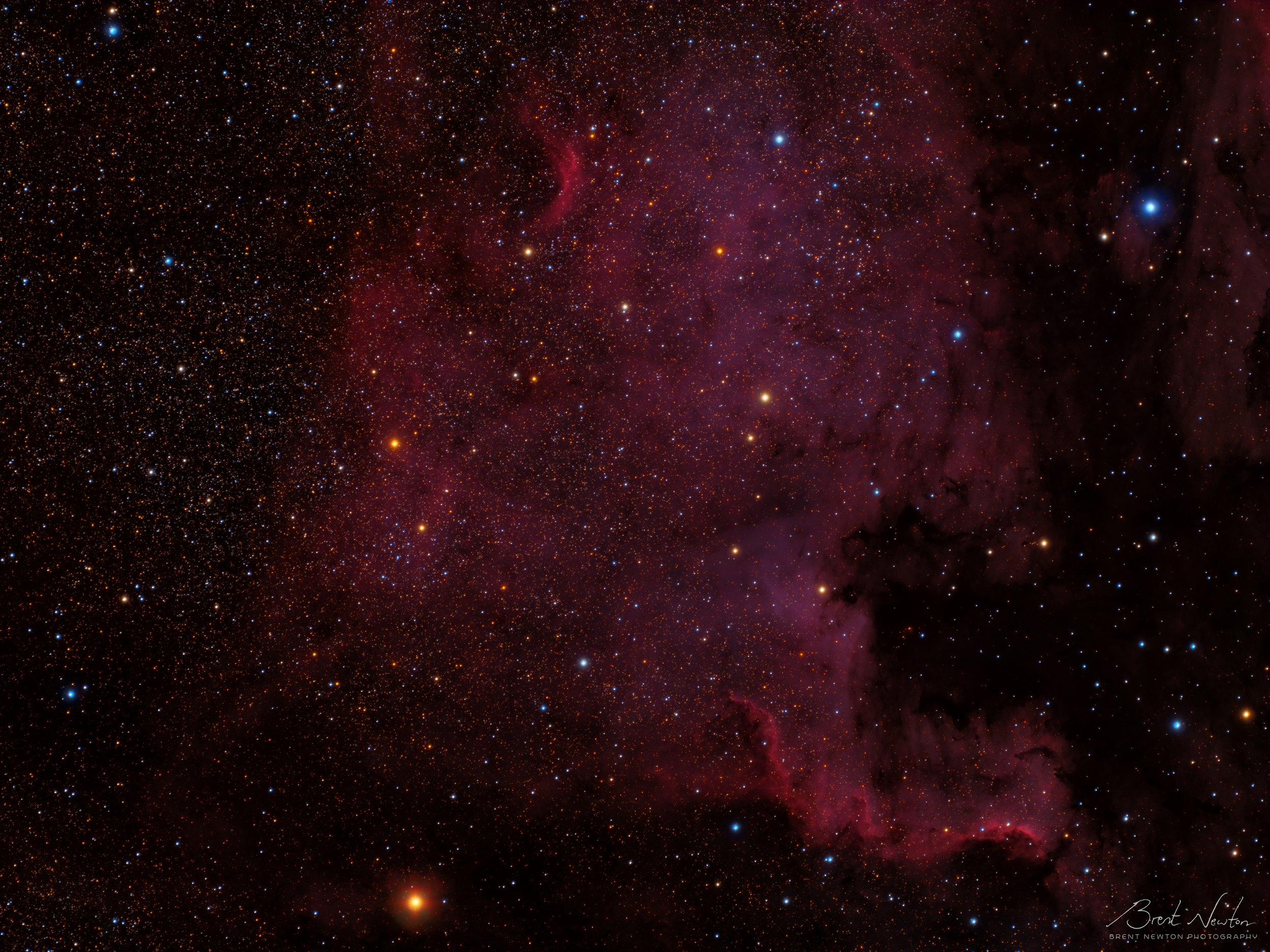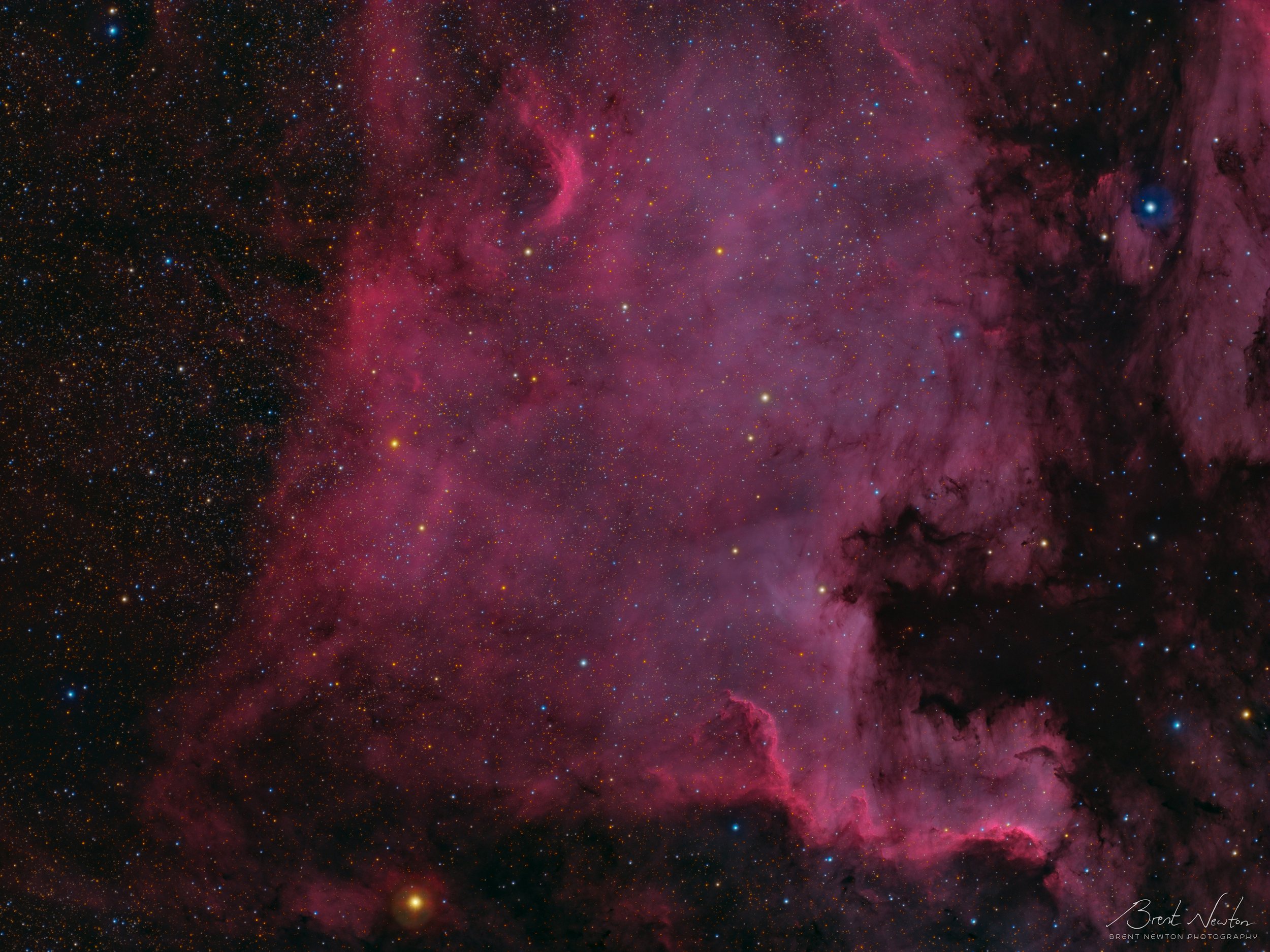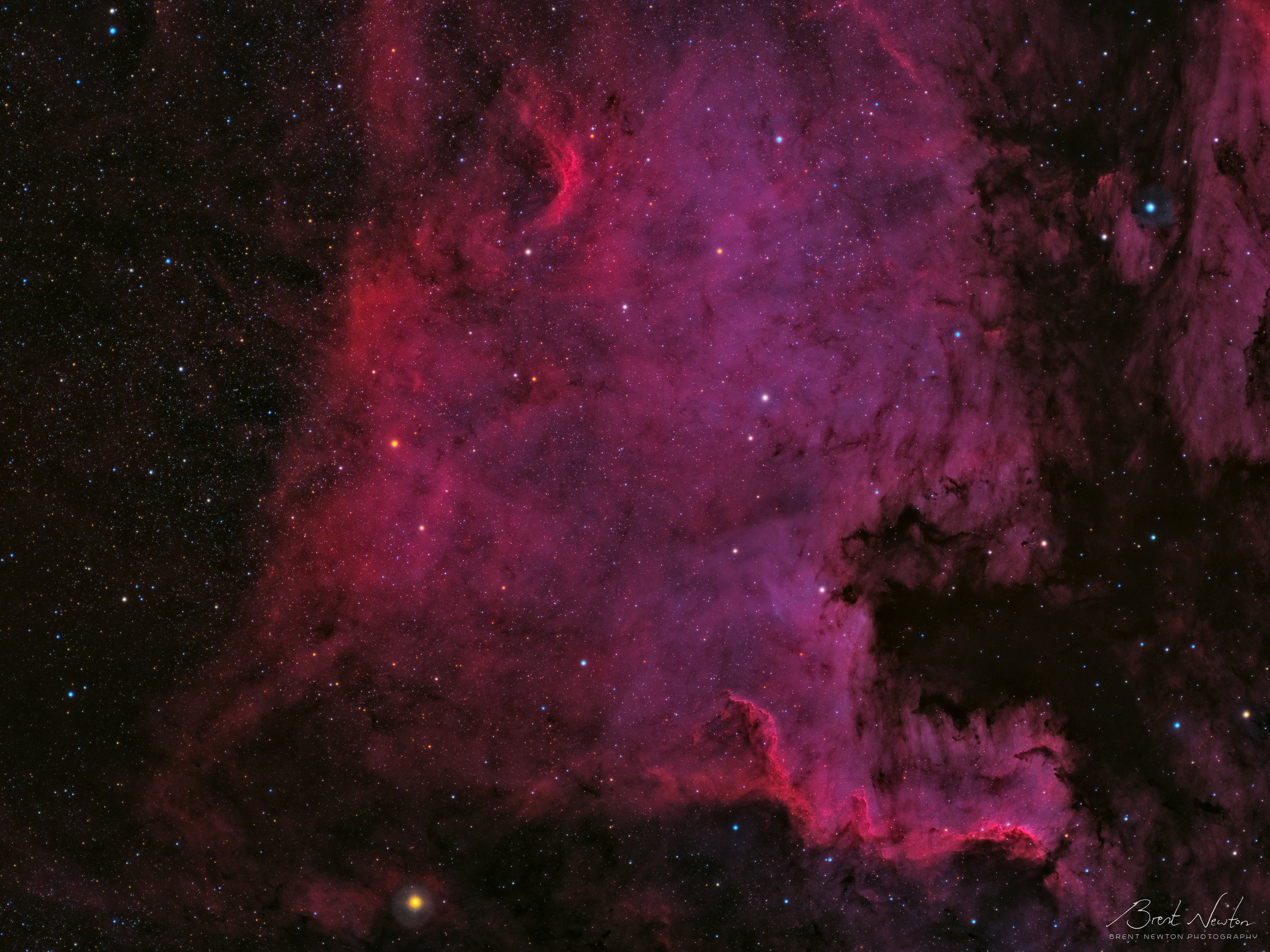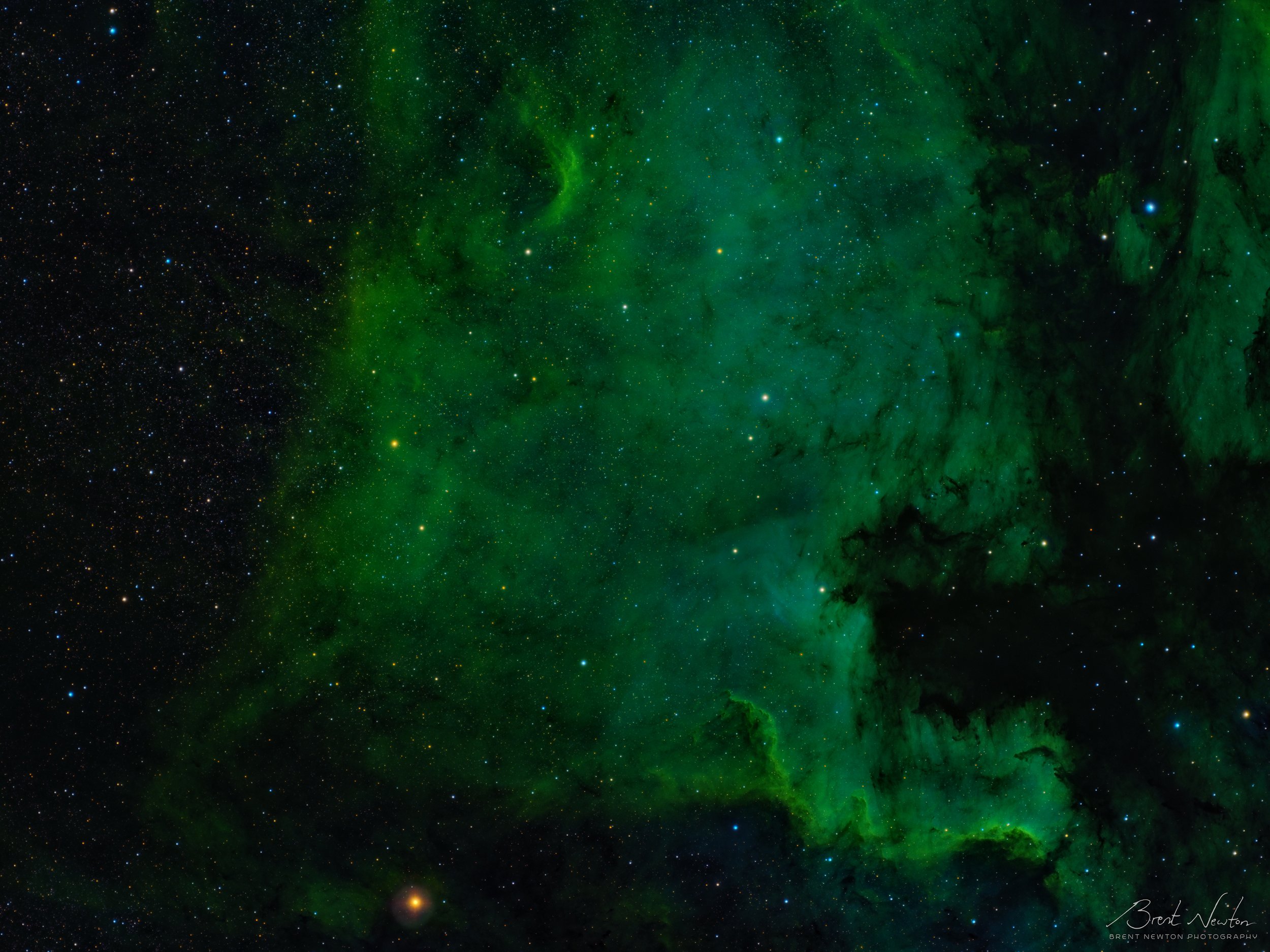The Many Colors of the North American Nebula
(Use Left / Right keys or tap to view the different photos)





Image Details:
The North American Nebula (NGC 7000) is a bright nebula in Cygnus (distance: ~2,200 l.y.) and a popular Summer target in the Northern hemisphere. From dark locations, it is naked eye-visible as a dim grey region in the higher Milky Way column. I shot this through the Summer of 2021 using several filters in order to present the nebula in various color combinations commonly used in amateur astrophotography.
Color can be a contentious topic in this hobby and while I’m not an ethical subjectivist, its hard to objectively state that night sky photos only have one correct color. How accurate various nebula are portrayed is often debated based on several factors, including camera capability (or how closely it matches the performance of the human eye), filters in use, and the color calibration used on the resultant photo. I’m not writing this to advocate for one particular viewpoint and generally take a laissez faire viewpoint that an astrophoto can generally look however the photographer wants (including compositing in fake foregrounds) so long as they are open and honest about their processing and edits. That being said, I’ve included a short explanation on the color blending of each variation I’ve created below
Broadband RGB:
The first photo is basic broadband color, meaning it is true color, or as close to true color as I can manage with my equipment. This means the colors of the photo are close to what we would see if our eyes were able to detect color in low-light conditions. The pink-red of Hydrogen-Alpha dominates the photo, with some blue/purple tones caused by the mix of teal doubly-ionized Oxygen and lesser amounts of blue and purple Hydrogen-beta and -gamma lines.
Narrowband Matched:
This is somewhat similar to the broadband RGB photo, but with narrowband (filters isolating spectral wavelengths of light corresponding to energized atoms) higher contrast images blended to the colors channels to match the color intensity of the true color photo. While the Hydrogen filter only captures the lower-energy Alpha line of 656.28nm, some of this deep red (as it appears black and white in my monochrome camera) was blended into the blue channel to simulate the blue and purple coloration of the higher energy Hydrogen-beta and -gamma lines. OIII data, which is naturally a blue-green or teal color, was also blended in limited amounts to the blue channel. As a result this photo benefits from the larger amount of light rejection inherent to narrowband filters in that the nebula has much higher contrast and generally less star bloat.
Narrowband Color Accurate:
Narrowband color combination in astrophotography often ignores the true color of the light captured in favor of aesthetic qualities. This photo may look odd as the pale green and vivid pink are an odd combination, but it is generally closer to reality than what is commonly presented. Ionized Sulfur is 672nm, a deeper red than Hydrogen-Alpha, is applied only to the red channel. Hydrogen, while only the red alpha line is captured (and applied to the red channel), is applied to the blue channel at 30% since ionized Hydrogen lines altogether produce an average of pink. OIII, normally an ocean-green or teal in color, is applied mainly to the green channel and then at 57% strength to the blue channel.
Narrowband Aesthetic Blend:
A more traditional narrowband blend focused on stronger narrowband contribution and aesthetically pleasing color. The base combination of narrowband is often called “bi-color” since Hydrogen is only used for red while Oxygen is applied to both green and blue. In this case I also ensured the broadband star color was preserved since in typical bi-color combinations, the lack of distinction between green and blue often neuters the star colors. The end result is similar to the second (Matched) photo, but with stronger color and more contrast
Narrowband False Color:
The final photo is completely false color (though depending on how strict you view color, all of these photos could be described as false color in some ways), meaning the 3 narrowband filtered-photos were to each color channel in order of wavelength instead of being selectively applied for various purposes. This specific combination is called SHO or the “Hubble Palette,” meaning Sii (the longest wavelength, though only slightly since it is just under 16nm away from Hα) is applied to Red, Hα to Green, and Oiii to Blue. While the combination seems odd, false color combinations are used to observe contrast in objects where one or two primary wavelengths may be completely dominant in normal true color. As with the previous photo, I blended in the RGB stars since in true SHO they often end up appearing purple or other odd colors.
Equipment:
William Optics Star71-II Petzval APO (345mm Focal Length, F/4.9)
ZWO ASI1600MM-P, ZWO Filters
Hypertuned Celestron CGEM-II
Autoguiding: Orion 50mm Guidescope + ZWO ASI224MC
Exposures:
Red, Green, Blue: 48, 40, 37 x 90” (Total: 3h 7.5m)
Hydrogen-Alpha 7nm: 179 x 300” (Total: 14h 55m)
Oxygen-III 7nm: 57 x 300” (Total: 4h 45m)
Sulfur-II 7nm: 52 x 300” (Total: 4h 20m)
Misc Details:
Capture Software: AstrophotographyTool, PHD2 (guiding), Celestron CPWI (mount control), Pegasus Powerbox (dew heater control, power management)
Processing Software: PixInsight
Taken from: Wichita, KS, Bortle 4
Capture Dates: 21-22 June, 19, 30 July, 1, 27 August, 2021
Annotation
Monochrome Hydrogen-alpha photo used for labeling

